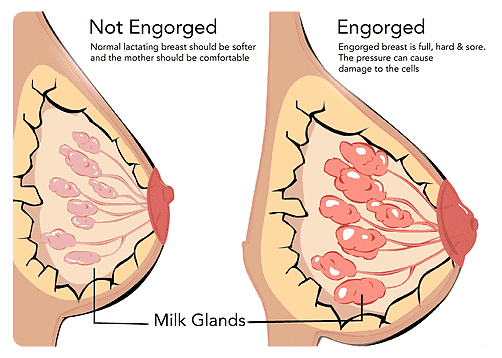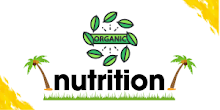To relieve breast pain after birth, not breastfeeding, apply ice packs to reduce swelling and pain. Wear a supportive bra to improve comfort as milk production slows down.
When experiencing breast pain after birth but not breastfeeding, it’s essential to find relief. Understanding the causes and effective methods for managing breast pain can make a significant difference in your postpartum experience. Whether you choose not to breastfeed or are unable to do so, dealing with breast pain after giving birth can be challenging.
This article will provide practical tips and guidance on how to relieve breast pain after birth when not breastfeeding, allowing you to focus on your recovery and adjustment to motherhood.

Credit: www.rejoicepregnancy.com
Understanding Breast Pain After Birth
After birth, breast pain can occur even if you're not breastfeeding. To relieve breast pain, try frequent feeding, warm flannels, gentle massage, or applying ice packs.
Causes Of Breast Pain
Breast pain after birth, despite not breastfeeding, can be caused by various factors. These may include: 1. Hormonal changes: After childbirth, the hormones estrogen and progesterone rapidly decrease, causing fluctuations that can lead to breast pain. 2. Engorgement: When the milk-producing cells in your breasts become overfilled with milk, they may become engorged, causing pain and discomfort. 3. Blocked milk ducts: Milk ducts can become blocked, leading to pain and swelling in the breasts. This can happen even if you are not breastfeeding. 4. Mastitis: Mastitis is an infection that can occur in the breast tissue. It can cause breast pain, redness, and fever, and it may require medical treatment.
Symptoms Of Breast Pain
Breast pain after birth may be accompanied by the following symptoms: 1. Soreness or tenderness in the breasts 2. Swelling or heaviness in the breasts 3. Warmth or redness in the affected area 4. Nipple discharge (clear or white) 5. Itching or skin irritation If you are experiencing any of these symptoms, it is important to consult a healthcare professional for an accurate diagnosis.
Duration Of Breast Pain
The duration of breast pain after birth can vary depending on the cause and individual factors. In general, breast pain may last for a few days to several weeks. However, if the pain persists or worsens, it is advisable to seek medical attention. It is crucial to remember that breast pain can be managed and relieved with appropriate self-care and treatment methods. Understanding the causes, symptoms, and duration of breast pain after birth is the first step towards finding the right solutions for relief.
:max_bytes(150000):strip_icc()/stop-breast-milk-production-medications-2371504-01-29f5997127614ed59849ec9bbffb83a9.png)
Credit: www.verywellfamily.com
Relieving Breast Pain After Birth
Experiencing breast pain after giving birth can be a common issue for some women, even if they have chosen not to breastfeed. Fortunately, there are effective ways to help alleviate this discomfort and promote healing. Below are some helpful methods to relieve breast pain after birth without breastfeeding:
Using Ice Packs Or Cold Compresses
Applying ice packs or cold compresses to the breasts can help reduce swelling and alleviate pain. Simply place a cold pack or crushed ice in a bag and gently apply it to the affected area for short intervals, allowing for relief from discomfort and inflammation.
Wearing A Supportive Bra
Opting for a supportive bra can offer significant relief by providing gentle compression, which can help minimize discomfort and provide necessary support. Look for a comfortably fitting bra with firm support to help ease the pressure and reduce pain.
Taking Over-the-counter Pain Medication
Taking over-the-counter pain medication, such as ibuprofen (Advil or Motrin), can help reduce pain and swelling. Always follow the instructions on the label and consult with a healthcare professional if you have any concerns about the appropriate dosage or medication options.
Home Remedies For Relieving Breast Pain
After childbirth, some mothers may experience breast pain even if they are not breastfeeding. This discomfort can be alleviated with home remedies that provide soothing relief. These remedies are simple and can be done in the comfort of your own home, offering natural relief for breast pain without the need for medication. Below are some effective home remedies for relieving breast pain:
Using Warm Compresses
Warm compresses can be an effective way to relieve breast pain. Simply soaking a clean cloth in warm water, wringing out the excess moisture, and placing it on the affected breast can help reduce discomfort. The gentle warmth can promote blood circulation and help alleviate any swelling in the breast tissue.
Applying Cabbage Leaves
Applying cabbage leaves to the breasts can provide relief from breast pain. After washing and drying the leaves, they can be gently crushed to release their natural juices and then placed inside the bra against the breasts. The cooling effect of the cabbage leaves can help reduce inflammation and ease discomfort.
Massaging The Breasts
Massaging the breasts can aid in alleviating breast pain. Using gentle circular motions and applying light pressure, massaging the affected areas can help improve circulation and reduce discomfort. This can be done in combination with warm compresses or after applying cabbage leaves for enhanced relief.

Credit: www.pregnancybirthbaby.org.au
Seeking Medical Assistance
To relieve breast pain after birth, not breastfeeding, try gently massaging the affected breast towards the nipple while your baby feeds, using warm flannels or a warm shower to encourage milk flow, and frequent feeding from the affected breast. Seek medical assistance for further guidance.
After giving birth, some women may experience breast pain and discomfort, even if they are not breastfeeding. If you are feeling significant pain, it is important to seek medical assistance to address the issue. Consulting a healthcare provider and considering alternative pain relief methods can help alleviate the discomfort.
Consulting A Healthcare Provider
When experiencing breast pain after birth, it is essential to consult a healthcare provider. They can assess your symptoms, determine the cause of the pain, and provide appropriate treatment. Medical professionals, such as obstetricians or lactation consultants, have the expertise to diagnose and treat postpartum breast pain effectively. During your consultation, be prepared to discuss any specific symptoms you are experiencing, the duration of the pain, and any factors that may aggravate or alleviate it. This information will help your healthcare provider make an accurate diagnosis and develop a suitable treatment plan.
Considering Alternative Pain Relief Methods
In addition to seeking medical assistance, you can explore alternative pain relief methods for postpartum breast pain. These methods can help reduce discomfort and promote healing. Here are some options to consider:
1. Apply cold compresses: Placing ice packs or cold compresses on the affected breasts can help decrease swelling and pain. Wrap the ice pack or a bag of crushed ice in a towel and apply it to the breasts for short intervals, taking breaks in between.
2. Take over-the-counter pain relievers: Non-prescription pain relievers, such as ibuprofen, can provide temporary relief from breast pain. Be sure to follow the instructions on the label and consult your healthcare provider before taking any medication.
3. Wear a supportive bra: Wearing a well-fitting and supportive bra can help alleviate discomfort by providing proper support to the breasts. Choose bras without underwire and made from soft, breathable materials.
4. Practice gentle breast massage: Gently massaging the breasts in circular motions towards the nipple while taking a warm shower or during a warm compress can help improve blood flow and relieve pain.
5. Engage in relaxation techniques: Stress and tension can exacerbate breast pain. Practicing relaxation techniques, such as deep breathing exercises, yoga, or meditation, can help reduce stress levels and promote overall well-being. Remember, while these alternative methods can offer relief, it is essential to consult your healthcare provider before trying any new approach to ensure it is safe and suitable for your specific situation. Seeking medical assistance and exploring alternative pain relief methods can help you find relief from postpartum breast pain.
Remember to consult your healthcare provider for an accurate diagnosis and personalized treatment plan.
Frequently Asked Questions For How To Relieve Breast Pain After Birth, Not Breastfeeding
How Do You Relieve Engorged Breasts?
To relieve engorged breasts, try frequent feeding, warm flannels or a warm shower, and gently massaging the lump towards your nipple while your baby feeds.
How Long Do Engorged Breasts Last?
Engorged breasts can last 2-5 days. Warm compresses, frequent feeding, and massaging can help relieve discomfort.
How Long Does It Take Cabbage To Dry Up Breast Milk?
Cabbage can help dry up breast milk in 1-2 days due to its cold compress effect.
Conclusion
In order to alleviate breast pain after birth, it is crucial to take the appropriate measures. By gently massaging the affected breast while your baby feeds and using warm flannels or a warm shower to encourage the flow, you can promote relief.
Additionally, frequent feeding from the affected breast can help. Remember to consult with a healthcare professional for personalized advice on relieving breast pain after birth, especially if you have chosen not to breastfeed. Taking care of your breasts is essential for your postpartum recovery.






0 Comments